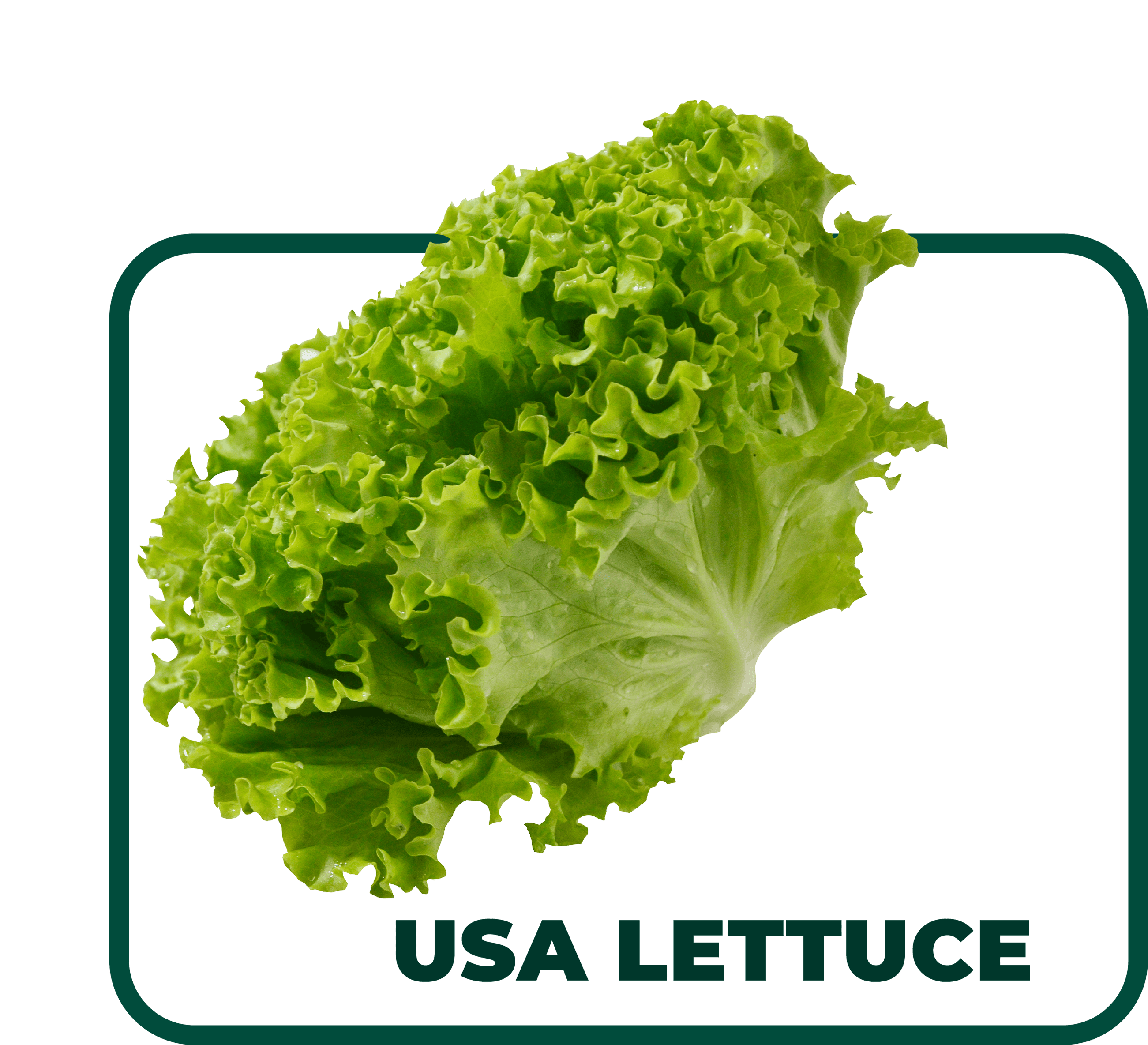
U.S.A Lettuce
Egyptian lettuce is known for its crisp texture and fresh, mild flavor. This leafy green vegetable comes in various varieties, including romaine, iceberg, and leaf lettuce. Romaine lettuce has sturdy, elongated leaves with a slightly bitter taste, while iceberg lettuce is characterized by its crunchy, pale-green leaves. Leaf lettuce, available in both red and green varieties, offers a delicate, slightly sweet flavor and a tender texture. Lettuce is a staple in salads, sandwiches, and wraps, providing a refreshing crunch and nutritional benefits.

Lettuce is typically planted in early spring or late summer, depending on the variety and climate. It thrives in well-drained soil with ample sunlight and cooler temperatures. Lettuce grows quickly and is usually ready for harvest within 6 to 8 weeks of planting. Harvesting involves cutting the outer leaves or the entire head of lettuce when it reaches the desired size and crispness.
Consuming Egyptian lettuce can enhance overall well-being by supporting immune function, promoting healthy skin, and aiding in digestion. The high vitamin A content helps maintain healthy vision and skin, while vitamin C boosts immune health and collagen production. The dietary fiber found in lettuce aids in digestive health, helps control blood sugar levels, and contributes to a sense of satiety. Antioxidants help to decrease inflammation and protect cells from damage.
Lettuce is low in calories but high in essential nutrients, contains vitamins A, C, and K, as well as folate and potassium. Vitamin A supports eye health and skin integrity, while vitamin C boosts the immune system and promotes collagen production. Vitamin K is important for maintaining bone health and facilitating blood clotting. Lettuce also provides dietary fiber, which supports digestion and contributes to a healthy gut. Additionally, the antioxidants in lettuce help protect the body from oxidative stress and inflammation.

